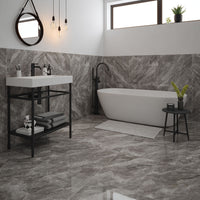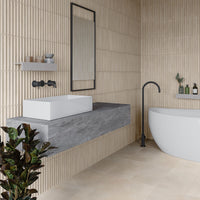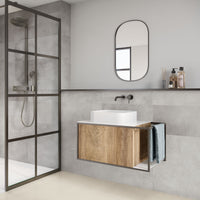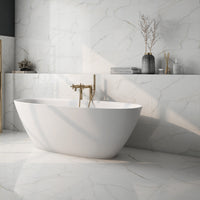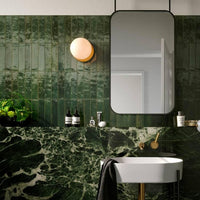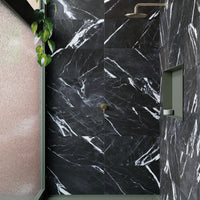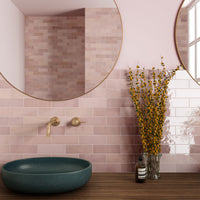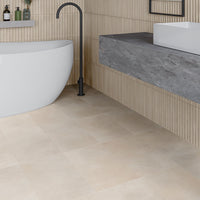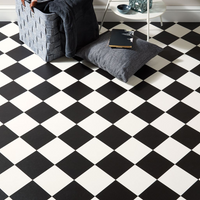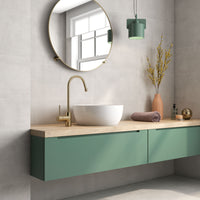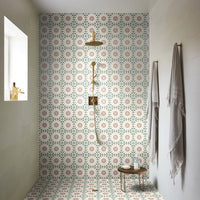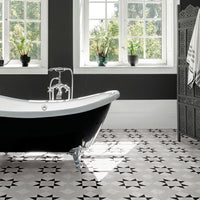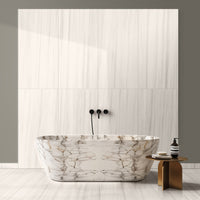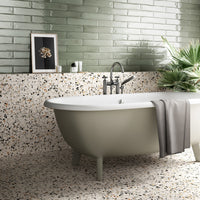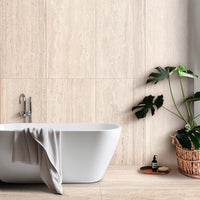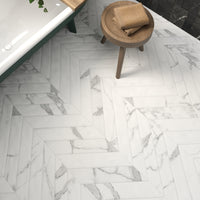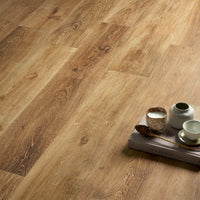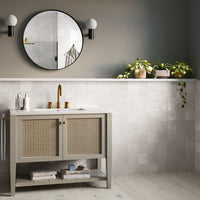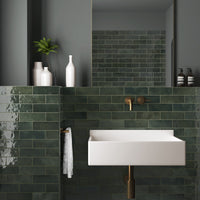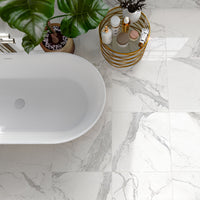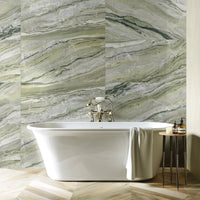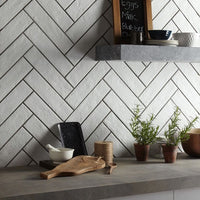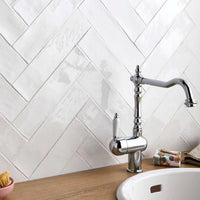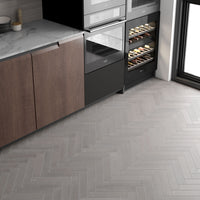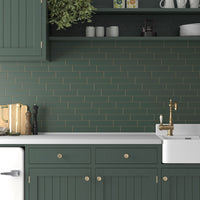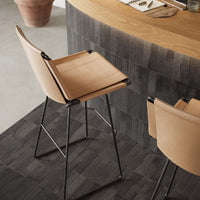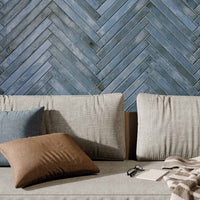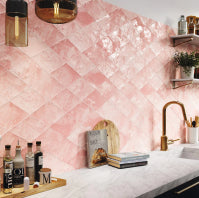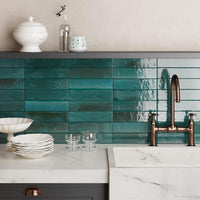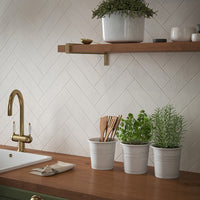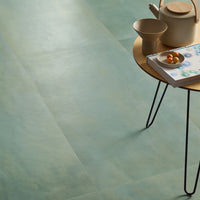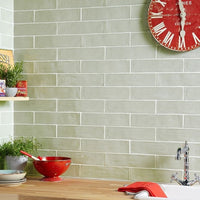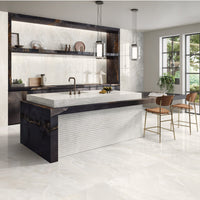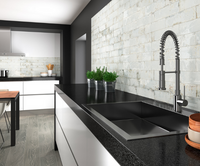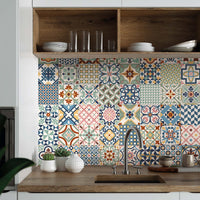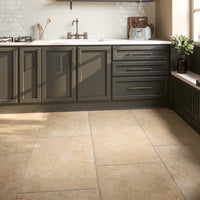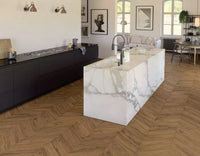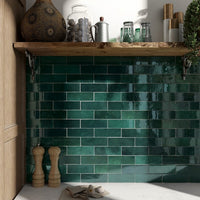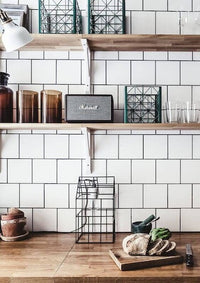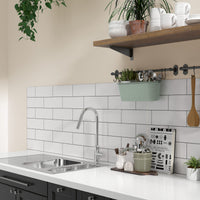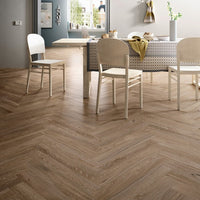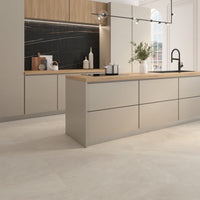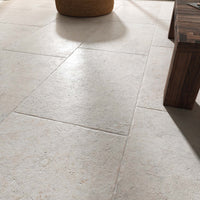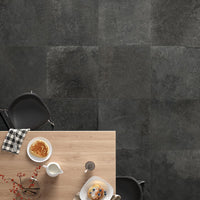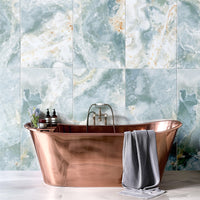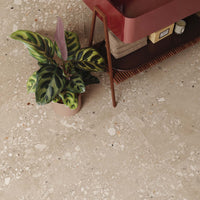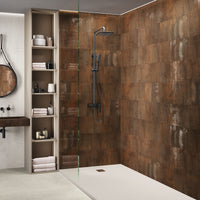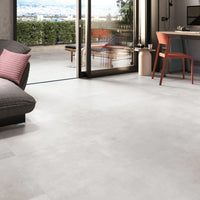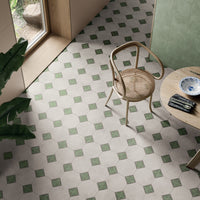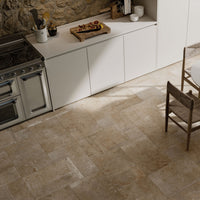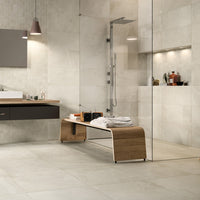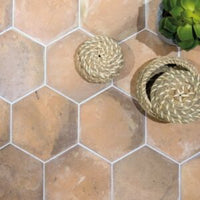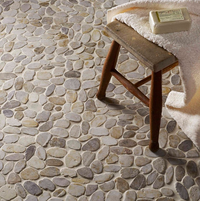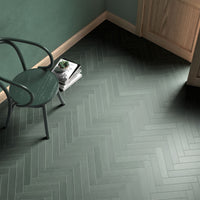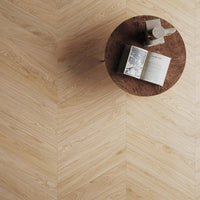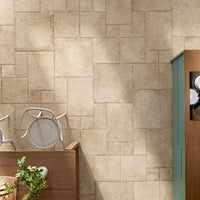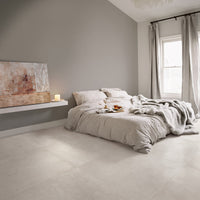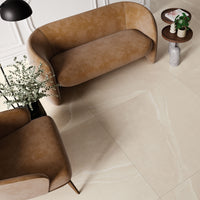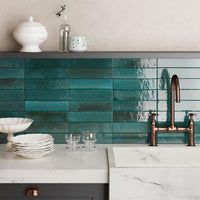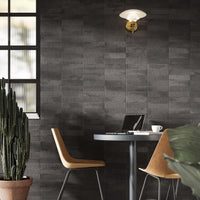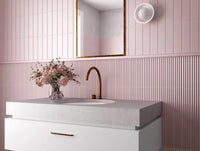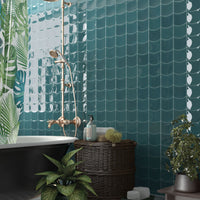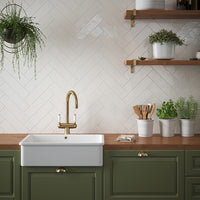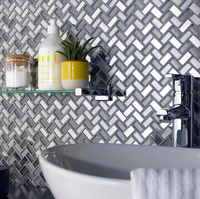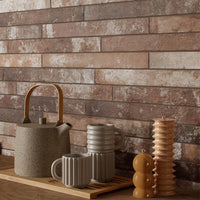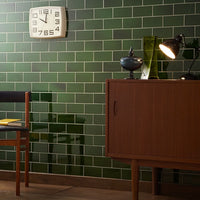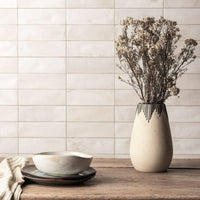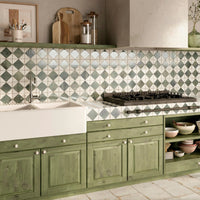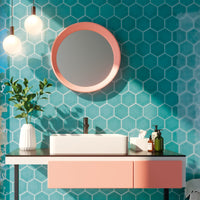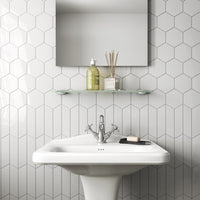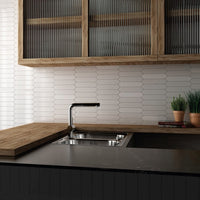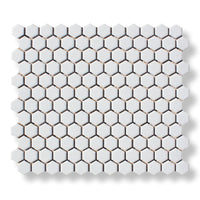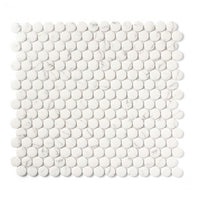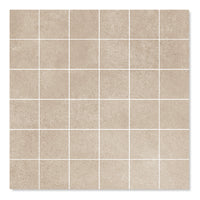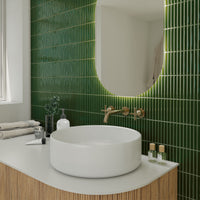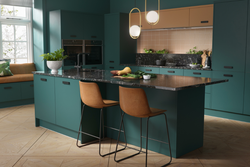Without a doubt, one of the main trends in interior design over the past few years has been for large format tiles. And this got me thinking, what’s the largest porcelain tile available today?
Have a guess.
60 x 60 cm? Perhaps 60 x 120 cm? No to both.
120 x 120 cm? Miles away.
I was pretty astonished when I found out.
One of our suppliers has just released a new range that measures up at a gigantic 1 x 3 metres. You read that right, that’s 100 x 300 cm.
Whichever way you look at it, that’s just huge.
Ok, don’t expect to see this type of tile in a tile shop near you any time soon but it goes to prove how quickly the tile world continues to change and how manufacturers strive to improve.
So this got me thinking, why are large format tiles such a popular choice for kitchens, bathrooms and beyond? Let’s stand back and take a look.
A seamless and contemporary look
Reality TV shows such as Grand Designs have fuelled a boom for stylish, open plan living spaces. According to the Daily Telegraph, the number of new kitchen-diners rose by 50% in the decade from 2002 to 2012.
And large format tiles are the perfect floor covering for these glossy kitchens and sleek entertaining spaces where a more modern design scheme is needed. Their size gives them a certain sophisticated touch and gravitas that smaller tiles just can’t compete with. Many large tiles will have rectified edges – straight polished sides – so you can lay tiles closer together for a more seamless finish.
Increase feeling of space
We’re not blessed with space in the UK and likewise, our homes are often smaller when compared to houses abroad, especially in the US. However, design can play a huge part here and it’s well know that clean lines can help increase the feeling of space in a smaller room. Laying larger tiles is a great way to achieve this as they result in fewer grout joints to distract the eye when you enter a room.
A more realistic finish
With the advent of new inkjet printing technology, porcelain tiles have never looked so good. If you take a look in your local tile shop or browse our website you’ll see wall and floor tiles inspired by rich exotic woods, luxury polished marbles and understated natural stones.
But how often do you see short wood planks or dimensionally challenged stone slabs? Not often. So, the larger the porcelain imitation, the more realistic the final finish. Some porcelain tile planks come are over 120 cm long and when laid, they’re virtually indistinguishable to the real deal.
And bigger tiles means less maintenance
Porcelain tiles are great as they’re pretty low maintenance. And let’s face it, few of us enjoy getting out the scrubbing brush at the weekend.
But of course, there’s always the grout joints that need a little TLC. Fortunately, as the size of tiles increases, the amount of grout joints falls so there’s less grout to look after. Therefore, larger tiles mean less maintenance and more free time.
So on the face of it, bigger tiles are always better, right? Well, yes and no.
As that old saying goes, there’s two sides to every story… So let’s take a look from a slightly different angle.
A sense of scale
True, that Forma 80 x 80 cm tile might look right at home in your new kitchen diner extension but put the same tile in a tiny downstairs cloakroom and it’ll just look a bit silly.
Good design is all about proportion so make sure that the tiles you choose are a good fit for your room. For example, smaller 15 x 60 cm wood planks would give a more natural and realistic finish in a smaller bathroom than a plank double the length would.
Bigger tiles cost more
Well ok, this isn’t strictly true – you can pick up some large 60 x 60 cm tiles on our website for quite a bit less than you’d pay for some smaller sizes. But if we start looking larger sizes – 60 x 120 cm slabs, for example – the price jump significantly.
This reflects the investment made to produce extra large tiles – some of the newer kilns used to fire these slabs are longer than a football pitch! This extra cost has to be recouped, so you might easily end up paying twice as much as you’d pay for more common tile sizes. And that’s before you consider the higher installation costs. Remember that some larger tiles may require two tilers to lift and lay your new floor.
And anyway, what’s so bad about grout?
The humble grout line is sometime seen as a necessarily evil when really, this couldn’t be further from the case. Grout lines allow tiles to move ever so slightly, meaning the chance of tiles cracking is dramatically reduced and they also provide a barrier to water and dirt getting into the gap between the tiles.
Not only this, but grout lines are integral to the overall design of your room and savvy interior designers use this to create maximum impact on smaller budgets.
Don’t believe me? Take a look at the images below and see how the grout line becomes a feature in it’s own right. Or take a walk down your local high street – I bet there’s a cool café or a hip burger joint that uses affordable white metro tiles and dark grey grout to create a timeless and striking feature wall.
So anyway, where does this leave us? Does size matter when it comes to tiles?
You know what, I’m going to sit on the fence here.
Sitting at my desk, I’m surrounded by tiles large and small. Tiny square mosaics for someone’s splashback. Extra large tiles for a designer floor. And this is what I love about tiles – they offer so many different solutions to so many different people.
I think the amount of choice when it comes to tiles is a great thing. It’s a sign of an industry in great health. And if you’ll excuse the pun, extra large tiles are a massive part of that. They’re just another part of a tile world that has always offered something for everyone. And that’s what matters to me.
